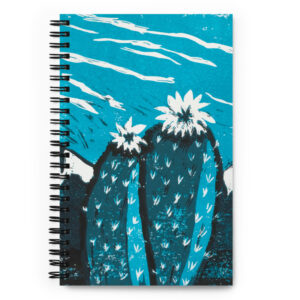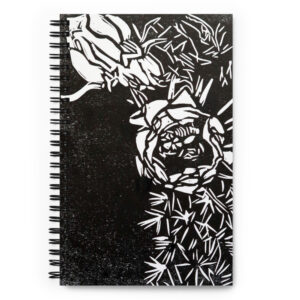
Intaglio Printmaking using Household Items
This art form, which includes etching, engraving, Drypoint, and aquatint, is well known for its ability to produce prints that look like drawings and add a bit more realism with this approach to printmaking with its ability to capture dark tones with its textured surface.
Intaglio printmaking involves creating a recessed line or a design beneath the surface of the plate. When inked, the recessed lines hold the ink, and the surface is wiped clean or selectively before printing.
Exploring Intaglio Drypoint Printmaking: Engraving vs. Chemical Processes
A chemical ground is placed on a metal plate during traditional etching.


Traditional Zinc plate with ground being removed.
Once the ground is removed, the plate is left in a chemical bath to etch the plate.


Once cleaned, the plate is inked selectively and then pressed and printed onto damp paper.
The print will be the reverse of the plate.

This recessed line can be achieved using an engraving tool or with a chemical process. A ground is laid on the surface of the plate and then selectively removed and then placed in a chemical bath which eats away at the metal plate leaving these recessed marks.
Creating intaglio prints at home is challenging and sometimes labor-intensive but rewarding. When creating an intaglio plate at home, there are some differences in the process due to the fact that not all of us have chemical ventilation in our homes. Most of us are probably wanting to go a more chemical free way when creating a plate at home. This is where engravings or Drypoint printmaking comes in.
This post contains affiliate links, which generates some small commissions at no extra cost to you. This commission helps keep this blog and shop running. Thank you for your support. See my disclosure form for more information.
Exploring Alternative Materials in Intaglio Printmaking
Traditionally, intaglio printmaking was done on metal plates, such as copper or zinc. However, the DIY printmaking approach has led artists and printmakers to use alternative materials to traditional plates.
The materials now used more widely include various plastics, which are more readily available and safer to work within a home setting. Different types of plastics offer unique plate surfaces for experimentation.
If you want to see alternate materials you can use from around your house check out my post Printmaking at home: Printing with everyday household items.

Plexiglass plates make excellent alternatives for intaglio plates.
The nice thing is that they are see through the plate and you can ink them the same way you would an etching. Skipping all the chemical treatments.

Tools and Techniques for Intaglio Printmaking
For creating the recessed lines, you can use tools such as nails, roulette, or even Dremel tools for plastic or plexiglass plates. For the intaglio application of ink, you would use a plastic or paper card to put the ink into the recessed areas of the plate and then you can use newsprint to wipe away the ink.
Use tarlatan (wiping fabric) or starched cheesecloth for this as well. The tarlatan or wiping fabric is great for a subtle tone left on the plate.
Drypoint is an intaglio method, that involves scratching directly into the plate and can be done with simple tools and materials, making it an excellent introduction to intaglio. The plate is left with a slight burr into the material creating a soft line.
Experimenting with different inks, such as oil-based or water-soluble inks, can alter the character of the print. Similarly, playing with the paper type and dampness can also significantly influence the final outcome. It will take a bit of experimentation to get the results you’d like.
Read all about my experiments with paper and other paper resourses here.
Materials Needed:
– Plastic containers (can be leftover blueberry/fruit containers)
– Damp paper (this is important for intaglio)
– Spoon or barren for rubbing (if you have a press, even better!)
Step-by-Step Guide to Print Intaglio:
1. Prepare Your Plate:
Cut your plastic container to create a flat surface. Draw your design lightly with a pencil.
2. Scratch Your Design:
Using your tools, scrape your design into the plastic. Aim for varying depths for different ink intensities.
3. Ink Your Plate:
Apply ink over your design, ensuring it gets into all etched lines. Wipe the surface clean, leaving ink only in the incisions. You can selectively wipe the plate and leave variations in tone.
4. Print:
Place your damp paper over the plate. Using a spoon or barren, rub the back of the paper to transfer the ink from the lines onto the paper.
Mark Making Materials you can find around the home:
- Needle or sewing pin
- Nail
- Screwdriver
- Paperclip
- Metal ruler edge
- Key
- Sandpaper
- Scissors (using the sharp edge)
- Metal file
- Safety pin
Exercise caution when using any sharp edge for creating marks into an intaglio plate. It’s essential to ensure safety when handling sharp tools during the printmaking process.
Tips for Intaglio Printmaking:
– Keep your paper damp, not wet, to get the best transfer.
– Experiment with different carving tools to achieve various line qualities.
– The more scratches in the plate the darker the tone.
A while ago I went over the process of printing a Intaglio Drypoint at home. I used a press, but you can also use pressure with a barren.
Your Turn!
If you have been working on creating prints I would love to see them. Post them in my Facebook Group Printmaking for Beginners.
Happy Printing!


